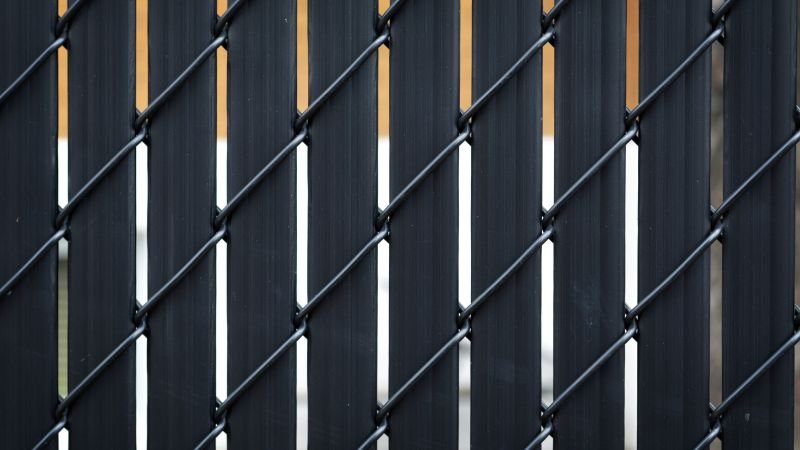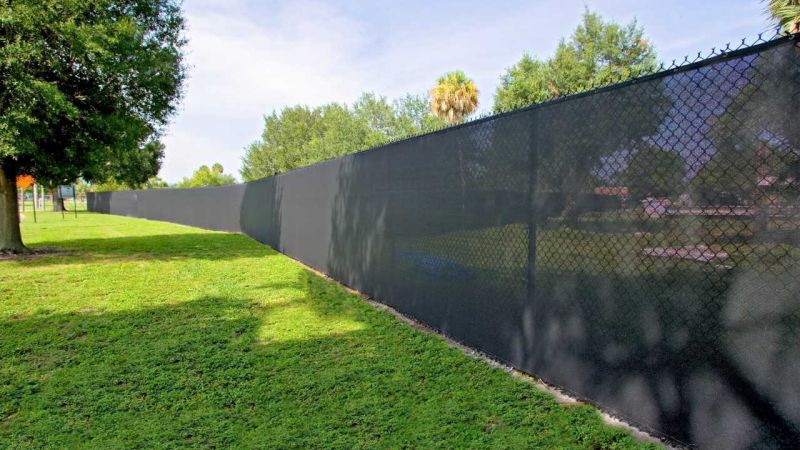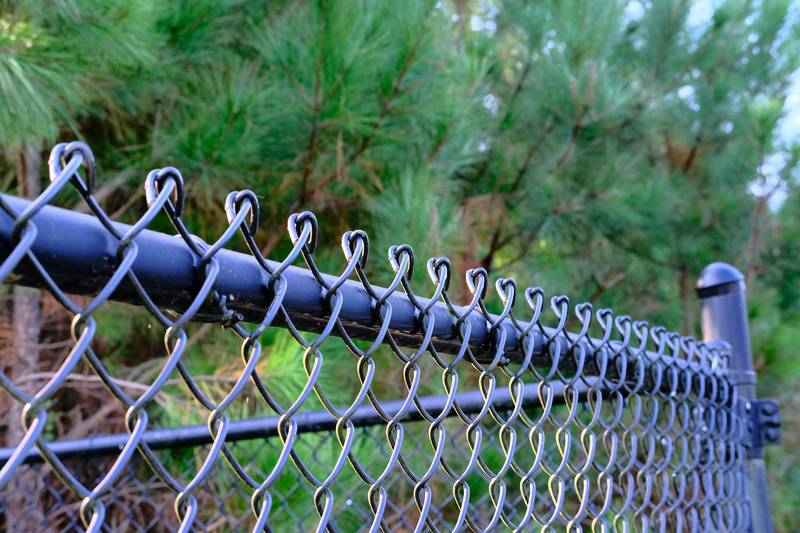Enhancing security and privacy for your residential property is a top priority, and one versatile and cost-effective solution that homeowners often turn to is the chain link fence. With its iconic diamond-shaped pattern, chain link fencing offers durability and functionality that can keep children, pets, and unwanted visitors at bay while establishing clear boundaries. In this blog post, we’ll explore the wide range of options available from residential chain link fence installers.
Grades of Chain Link Fabric
Chain link fabric refers to the actual wire mesh which operates as the barrier.
Chain link wire is sized by “gauge”. The smaller the number of the gauge means the wire is thicker and stronger. Even a one to two gauge difference makes a significant difference in the strength and durability of the wire. Not only does this increase make the wire stronger, but also make galvanized coating is more durable. Thicker wire can be hot dipped longer in zinc without melting. This creates the rust resistant galvanized coating.
At a minimum 11.5 gauge chain link fence should be used in a residential application. If you need more strength you could use 11 gauge or 9 gauge.
Mesh Size for Residential Chain Link Fence
Mesh size refers to size of each diamond shaped opening in the fence fabric. For residential use 2″, 2 1/4″ or 2 3/8″ inch openings will be typical and adequate. The larger mesh sizes are used with the lighter wire gauges, such as 11.5. Smaller mesh sizes, meaning smaller openings, will be more durable since more wire is used.
Chain Link Fence Coatings
The steel wire use to manufacture chain link fence is coated in several ways to prevent corrosion and rust. The following are the general options of chain link fence coatings.
Galvanized
Galvanized coated wire is the most common variety of chain link. It can easily be identified by the dull gray finish created by the zinc coating process.
The two main variations will be Galvanized After Weaving (GAW) and Galvanized Before Weaving (GBW). GAW mesh is dipped in zinc after wires have been woven together. GAW is the best best solution for all applications including residential installations.
Vinyl Coated
Vinyl coated chain link takes galvanized wire and adds an additional coating PVC. The extra protection of the layer of vinyl will make the fence last longer.
In residential areas the use of vinyl coated chain link may be required. Usually, in a black or dark green color.
Aluminized
Aluminized chain link is produced by applying an aluminum coating to the steel wire. The aluminum will give the fence a shiner and smoother appearance than galvanized chain link. The aluminum coating is naturally resistant to rust or corrosion and weather. These fences can last up to 25 years with little maintenance. Aluminumized chain link fencing is typically only chosen for commercial or public use.
Stainless Steel
Stainless steel chain link is the most durable and most expensive. Stainless steel can endure extreme temperatures and harsh weather. The extra durability means it will not sag and will maintain its shape for years.
That’s why it’s commonly used for commercial or industrial locations that require extra durability. In most situation stainless steel chain link will not be need for a residential installation.
Galvanized vs Vinyl Coated Chain Link
For use in residential chain link fence installation the choice between typical galvanized chain link and vinyl coated comes down to cost and appearance. Vinyl coated chain link is often referred to as “black chain link fence” due to black being one of the most popular color choices. Choosing the right one for you involves understanding the differences and what effect they have on the fence:
- Cost – Vinyl coated chain link can cost up to twice as much as galvanized for the same gauge of wire.
- Appearance – We have all seen galvanized chain link which has a plain and industrial look. Your only color option is its natural gray metal color. This may be fine for commercial installations but not desirable or allowed in residentially zoned areas. Vinyl coated is more attractive and will look better longer than galvanized chain link.
- Durability – The main difference between a galvanized and vinyl coated chain link fence is vinyl coated adds an additional vinyl coating over the galvanized wire. Vinyl coated will be slightly more corrosion-resistant and last slightly longer as a result.
Chain Link Fence Privacy Options
Not everyone enjoys the aesthetic properties of chain link fencing. The main advantages being low cost and durability.
Removing a chain link fence can be difficult since the posts are secured in concrete. Even if you get the posts removed you still have the difficult to dispose of chain link mesh.
The appearance of chain link and the difficulty of removal makes options that cover up your chain link seem attractive. Options include privacy slats, privacy screens and wood fence panels.
Privacy Strips
Privacy strips or slats are narrow strips that simply slide in from the top of the fence. Slats come in a wide variety of colors and are made from either high-density polyethylene (HDPE) or extruded aluminum. Slats typically provide at least 75% privacy. While some slats just slide in there are privacy slat products secured with “top lock” and “bottom lock” systems.

Privacy Panels
Privacy panels for chain link fence (aka “privacy screens”) attach to your fence to provide privacy while allowing some air flow. These privacy panels will be the most cost effective method to add privacy to a chain link fence. Privacy ranges from 80 to 95 percent depending on the privacy mesh material. You mount the privacy screen to your fence using zip-ties through the brass grommets in the reinforced edge.
This type of mesh screening is made from woven polypropylene or knitted polyethylene (HDPE). Quality screens will be treated for UV resistance. The most durable privacy screens will last 8 to 10 years. While you have probably seen screens in a black or dark green colors you can get a wide variety of colors.

Code Requirements for Chain Link Fencing
Cities or counties in the Columbus area have different rules for allowing chain link fences on your residential property. For example:
- The City of Columbus does not prohibit chain link fencing.
- Delaware Ohio only permits chain link fences in rear and side yards.
- Upper Arlington requires that chain link fences be vinyl coated in typical dark colors.
- Franklin County does not allow chain link fence between the street and the principal structure (your home).
Check out the zoning rules for chain link fences in your area. Your fence contractor should assist you in obtaining any necessary permits prior to construction.
Related Post about Chain Link Fence

